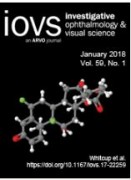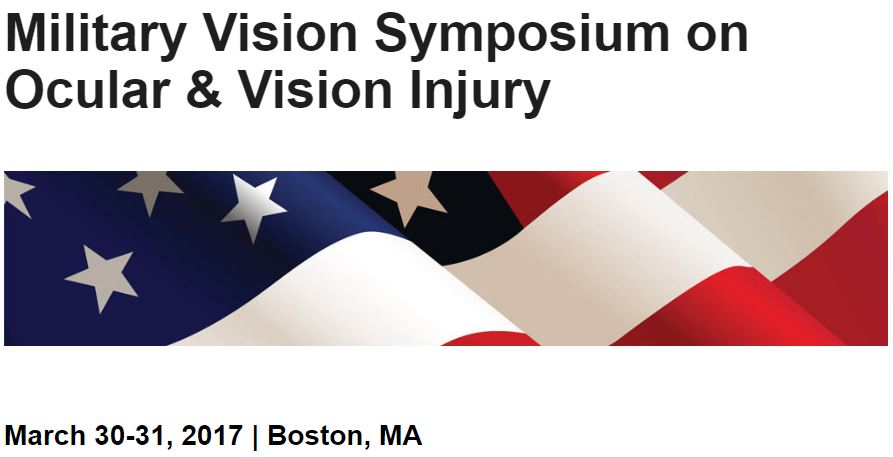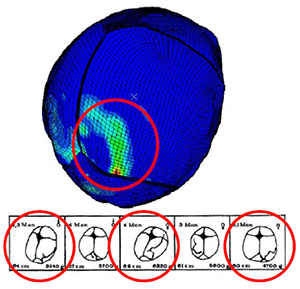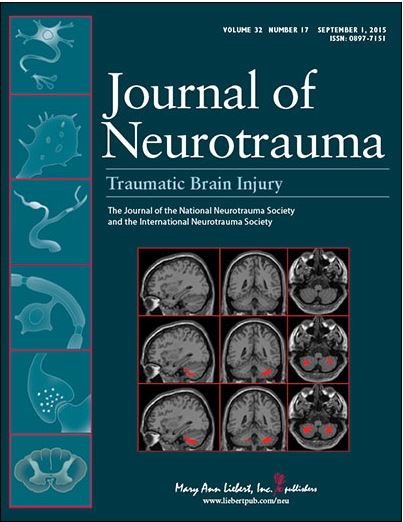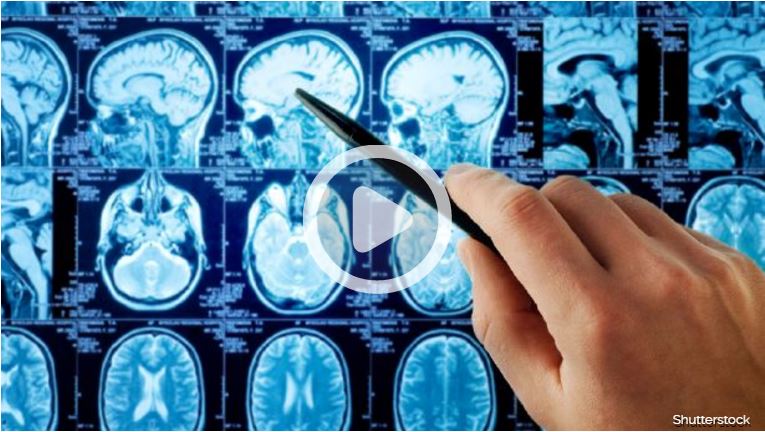Congratulations to Jourdan Colter for getting her manuscript “Finite element design optimization of a hyaluronic acid-based hydrogel drug delivery device for improved retention” published in the Annals of Biomedical Engineering! Her figures were extremely high-quality and selected for the cover of the March 2018 issue. Dr. Barbara Wirostko from EyeGate Pharmaceuticals collaborated on the...
Continue readingOcular Blast Injury paper published in IOVS
Congratulations to Dan Shedd for his publication “Long term temporal changes in structure and function of rat visual system after blast exposure” being accepted and published in IOVS. This long (13 typeset pages!) multifaceted manuscript is a culmination of his thesis and includes detailed imaging, protein analysis, behavior analysis, and histology of eyes after...
Continue readingCoats to Present at Military Vision Symposium
Join us at the 6th annual Military Vision Symposium on Ocular and Vision Injury hosted by Harvard Medical Center. Dr. Coats will be presenting an overview of the temporal progression of eye injury following blast exposure. Full itinerary for the symposium can be found here....
Continue readingPresentation Selected for Podium at ARVO 2017
Jourdan Colter’s abstract titled, Coefficient of friction between carboxymethylated hyaluronic acid (CMHA-S) films and the ocular surface, was selected for a podium presentation at the ARVO national meeting to be held in Baltimore Maryland May 7-11. The Annual Meeting of the Association for Research in Vision and Ophthalmology (ARVO) is the largest gathering of eye and vision...
Continue readingDOJ Funds Skull Fracture Research
The Department of Justice recently awarded the lab funding to characterize the fracture mechanics of infant cranial bone. Dr. Coats (PI), in collaboration with Dr. Ashley Spear (mmm.mech.utah.edu) and Dr. Susan Margulies (UPENN), will develop a computational framework to predict skull fracture patterns following head impact in infants. The work will involve microscale characterization of the fracture...
Continue readingCoats Named University Nominee for David Mahoney Neuroimaging Award
The David Mahoney Neuroimaging Award is a grant program led by The Dana Foundation aimed to support research to determine how the human brain functions normally and/or with disease using novel imaging techniques. Dr. Coats’ application, Subarachnoid Microstructural Damage as a Biomarker for Mild TBI, was selected to represent the University of Utah in...
Continue readingNew Funding to Mitigate Risk of Concussion
The Smart and Connected Health Program through the National Science Foundation recently awarded our team (in collaboration with several others) a grant titled Reducing Traumatic Brain Injury Risk with Smart Collision Detection and Mitigation. The grant began September 1, 2016 and will be focused on ,developing technology to better sense head impact information (velocity, direction), alert...
Continue readingNIH Grant Awarded to Investigate Vitreoretinal Adhesion Changes with Age
The National Eye Institute at NIH recently awarded our group a two-year R21 grant titled Quantitative Regional Analysis of Vitreoretinal Adhesion with Age. The grant began March 1, 2016 and will be focused on elucidating mechanisms of adhesion at the vitreoretinal interface, and quantifying how those mechanisms change with age. The data will be...
Continue readingNew publication investigates the effect of cyclic loading on pediatric TBI
Our manuscript, “Cyclic Head Rotations Produce Modest Brain Injury in Infant Piglets” was recently accepted by Journal of Neurotrauma for publication in 2016. The paper evaluates the time-dependent response of axonal injury and extra-axial hemorrhage following a continuous or episodic cyclic head rotation as compared to a single head rotation. Authors on the paper are Brittany Coats (UofU) Gil Binenbaum...
Continue readingPAC Research Highlighted on KSL
KSL recently aired a news story on our research of the arachnoid trabeculae in mild traumatic brain injury. Through optical coherence tomography imaging and finite element modeling, we’ve shown that these microstructures dictate force distribution from the skull to the brain. By implementing the natural variability of the structures into our models, we’ve been able...
Continue reading

